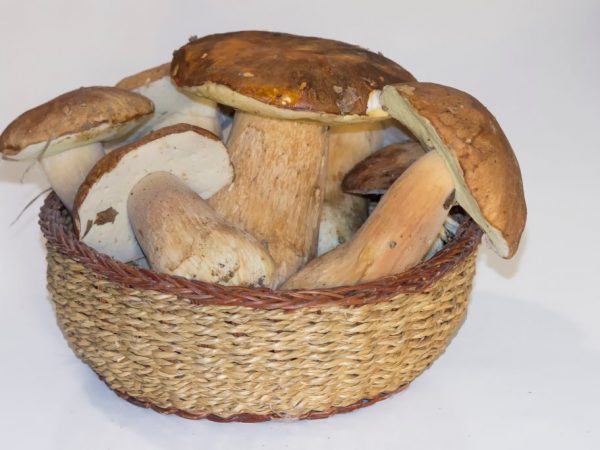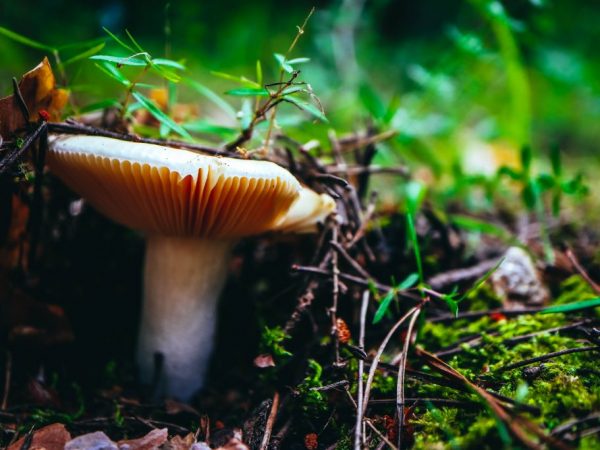Map of mushroom places of Chuvashia
So the time has come to pick mushrooms in Chuvashia, the "quiet hunting" season begins. Of course, some mushrooms could be found in summer, but the real season is autumn, early and golden, when the weather is still warm but damp. If this summer had not been so dry, the harvest season would have started early. But even now there is still enough time before the arrival of real cold weather, which means that you can go to the forest with a basket.

Map of mushroom places of Chuvashia
Silent hunting is traditionally called mushroom picking. And not only because the excitement of a mushroom picker is so similar to a hunting one. Mushrooms seem to hide from pickers, hide between old foliage and grass, choose secluded places among tree roots and in uneven soil. To find them, you need knowledge about their features and about the interspecific neighborhood with trees.
Gathering mushrooms requires patience and time, observation and luck, however, knowledge of mushroom places is especially important. Without them, in this case, nowhere.
How to find mushroom spots
Chuvashia is a mushroom land. Residents annually stock up on mushrooms for the winter, and many families keep old recipes for traditional seasonal dishes with these delicious and nutritious gifts of nature. Mushroom pickers who were born in Chuvashia, of course, know mushroom meadows and copses of their native land from childhood.
Not all local lovers of "quiet hunting" are ready to share information about where to find the best boletus and boletus boletus. But for this purpose, there is a working map of mushroom places in Chuvashia.
Mushroom Sites Map
A mushroom map of Chuvashia, or a map of a mushroom picker, is a geographical map of the republic, sometimes even a more expanded map of the Volga region, with information "tied" to certain settlements about the species of mushrooms growing in the vicinity.
Similar maps began to be printed in various regions back in the days of the USSR. Now, in the age of the Internet, they have become even more accessible, and they can also be easily adjusted annually.
Almost throughout the entire republic of Chuvashia you can find:
- boletus;
- aspen mushrooms;
- russula;
- honey mushrooms.
Boletus and aspen mushrooms belong to the Obabok genus. They form mycorrhiza with the roots of coniferous and deciduous trees. Mycorrhiza (symbiosis of the roots of a tree and mycelium) is a perennial, persistent formation, therefore, in coniferous-deciduous forests, they will not end up as long as the forest lives.

Chuvashia is rich in mushroom places
Russula also grows in mixed forests.
The ubiquity of honey agarics is known, because all that they need for a happy life is a decaying tree.
But white milk mushrooms (belong to the family Syroezhkovye) form mycorrhiza with birch, are found, according to the map, only in the Volga region.
Black milk mushrooms belonging to conditionally edible mushrooms grow:
- in the Volga region;
- in the vicinity of Mariinsky Posad;
- near Ibresi;
- around the city of Alatyr.
Irina Selyutina (Biologist):
The black mushroom lives in coniferous (pine-spruce) or mixed forests with a large percentage of birches growing there. Deciduous forests are exotic for him. However, there are cases when a black nest was found in the steppe. But this does not mean that there is almost one of them.It's just that birches were found in those places, with which the fungus forms mycorrhiza. Plus, mycelium requires a lot of sunlight. This type of mushroom is found from mid-July to October. But the peak of fruiting depends on the weather: mushrooms will appear only with the onset of coolness. Hot and dry summers and the same autumn are capable of inhibiting the development of mycelium so much that fruiting bodies may not form.
Butterlets, according to the map, are found around Alatyr. Butterlets usually grow along the perimeter of forest edges, on the sides of paths; oak groves and young pine forests are especially fond of.
Where not to collect
Unsuitable collection sites:
- in the territories of wildlife sanctuaries and reserves (according to the law, this threatens a large fine);
- near highways and railway tracks;
- not far from settlements with industrial enterprises;
- near landfills and landfills.
The biology of fungi is such that their body accumulates all harmful pollution from the environment (air, water, soil). For example, when collecting near a highway, heavy metals from exhaust gases, primarily lead, will certainly be found in the mushroom mass.
At landfills (and near them, because rain and soil water far carries substances that enter the soil and on its surface), all kinds of toxins and decomposition products of biological and inorganic wastes will penetrate into the body of the fungus.
What is important to remember
Special recommendations for mushroom pickers:
- You cannot pick unknown mushrooms.
- You cannot taste raw mushrooms.
- Before going into the forest, learn about all the differences between edible and similar poisonous counterparts.
- If in doubt, ask a more experienced mushroom picker to sort through your forest trophies for inedible finds.
- Take care of myceliums: do not trample them, do not pull the mushrooms out of the ground with rough movements, but cut off or gently twist the leg.
- Use a stick to search for mushrooms - this is much more convenient.
The map shows mushroom places in Chuvashia quite accurately and there is a detailed listing of mushrooms growing in abundance in these places. Successful quiet hunting!


